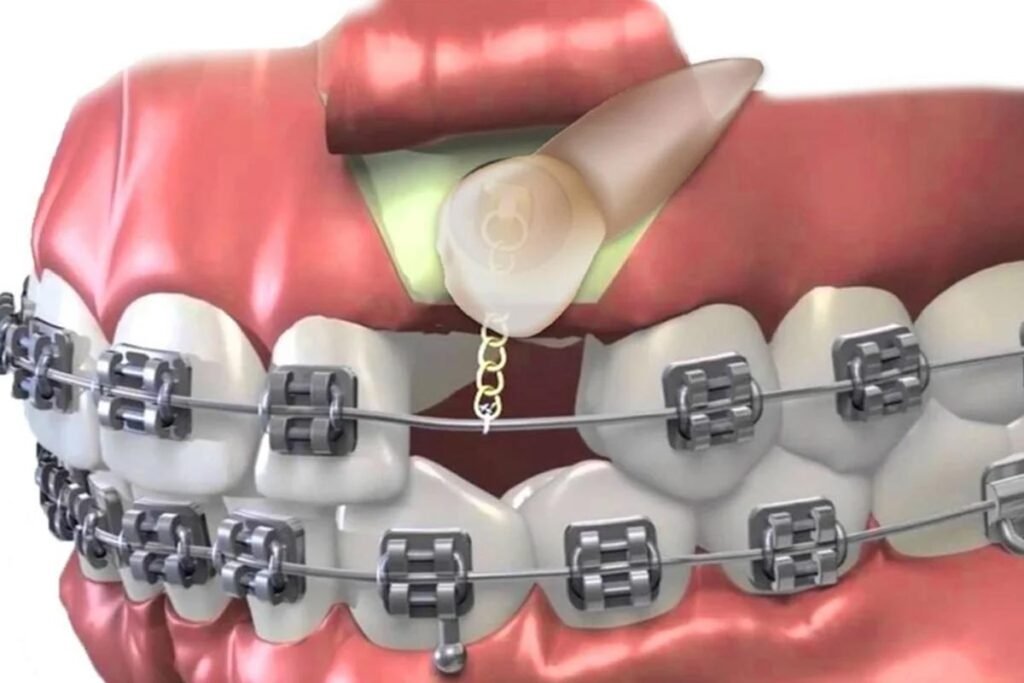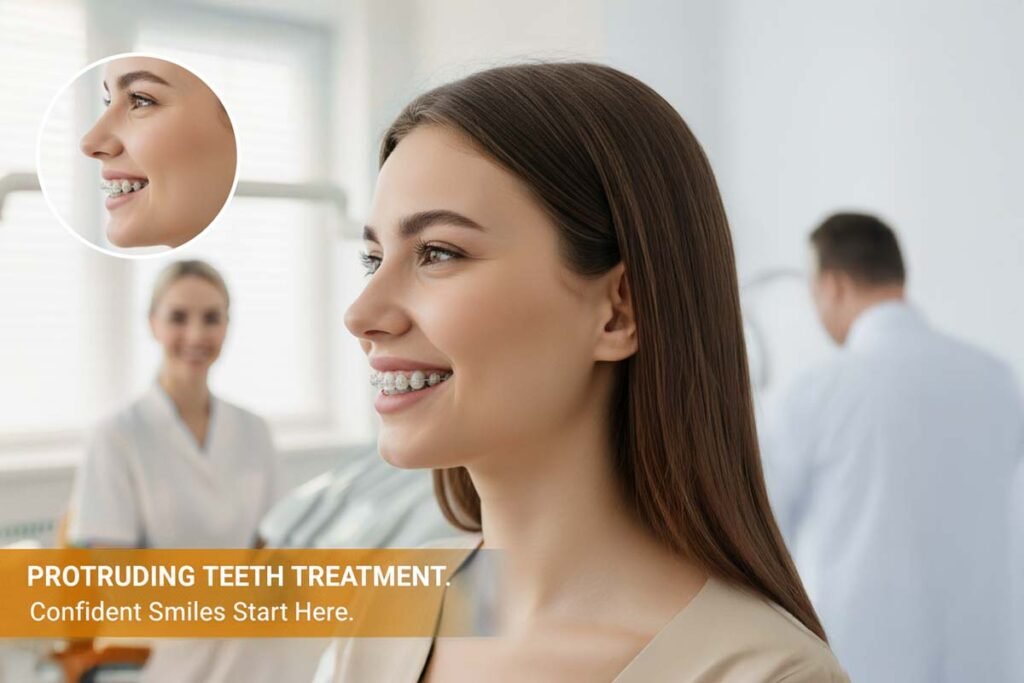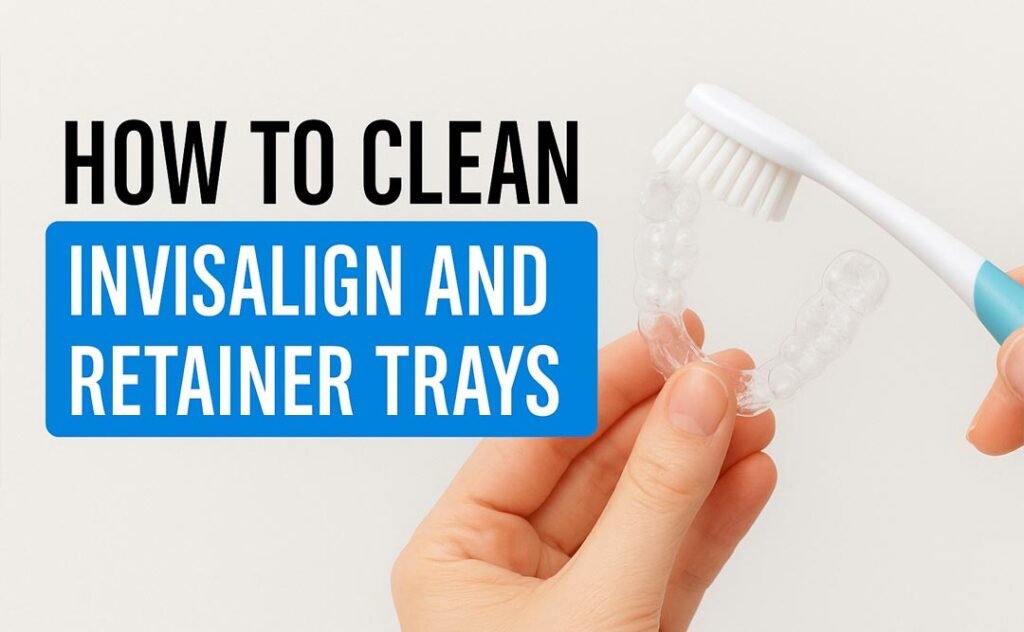Orthodontic treatment not only aligns your teeth, but it is actually a key part of long-term facial and oral balance. One complex issue of orthodontics can result in impacted maxillary canines, which is extremely infrequent. Which can turn into a challenging problem in no time. And to manage it without professional assistance, it can become difficult to manage or might further elevate the risk of root resorption on the opposing teeth.

At Art of Smile Philadelphia, Centre for Cosmetic Orthodontics, we employ proper diagnosis and treatment planning to create a personalized treatment plan with customized appliances that effectively move impacted canines. The procedure re-establishes function and harmony and provides esthetic balance.
Impacted Canine: At a Glance
Impaction of a tooth is where the tooth fails to come into the correct position within the expected time, and may result from various factors that include obstruction by the adjacent teeth, incorrect path of eruption, or when the space of the dental arch does not allow it to accommodate the tooth.
Of all the types of teeth, the permanent upper, or maxillary, canine is known as the second most impacted type of tooth, next only to the third molars or the wisdom teeth.
Why canines matter
- When a tooth gets impacted, it’s generally accompanied by numerous issues, such as eruption delay, gum & periodontal problems, resorption of adjacent teeth, and potential effects on facial growth.
- Owing to the prolonged eruption path and complex anatomical configuration of canines, treatment intervention requires careful planning and monitoring.
Causes of Impacted Canine
The complications caused by impacted canines do not arise due to a single cause but result from various components acting together. Described in the sections to follow are the key contributing components that significantly impact the health and positioning of the canine teeth:
Local factors
- Insufficient space between the dental arch
- Early loss of the primary, or baby, canine
- Obstruction of the path of eruption
- Abnormally oriented path or angle of the crown of the canine
- Late eruption or root formation, i.e., the tooth may miss the “window of eruption”
General/Systemic factors
- The impaction of canines can often have a hereditary component. There is, however, a predisposition for impacted canines among individuals with dental anomalies like peg-shaped lateral incisors or tooth agenesis.
- The development of a palatally impacted canine may be related to a narrow maxillary arch, reduced arch length, or decreased height of the alveolar bone, which offers limited space for eruption.
Phases of Orthodontic Treatment: Impacted Canines
Orthodontic therapy of impacted canine teeth is a well-designed procedure that usually occurs in three distinctive stages: interceptive, active, and retention. All phases are important in rotating the canine to its ideal position while safeguarding the neighbouring teeth, bone, and gums.

Phase 1. Interceptive Phase
Typically, this early stage begins in childhood-around the ages of 9-11-which is the time when the permanent canines are developing and should start to erupt. Early detection of potential impaction allows for the creation of a favourable path for natural eruption.
Common interceptive methods include:
- Extraction of retained baby canines to clear the tooth eruption path
- Arch expansion appliances, such as Rapid Maxillary Expansion (RME), are used to create additional space
- Periodic radiographic monitoring is conducted for over 6–12 months, which helps track the progress of the eruption
Phase 2. Active Surgical-Orthodontic Phase
If the canine fails to erupt by itself, then a combined orthodontic and surgical technique must be employed. The process will entail a highly precise series of steps in finding, uncovering, and guiding the tooth into place. Braces are put on all permanent teeth that have erupted in the mouth, and space is created for the prospective impacted tooth, which is surgically exposed and guided into eruption
Phase 3. Retention and Long-Term Follow-Up
After being successfully aligned, retention is the emphasis on keeping teeth from moving back to their original positions. Thus, it becomes crucial for you to practice post-orthodontic treatment care for optimal cure.
Timeline of Impacted Canine Treatment
To be more specific regarding the time taken for each stage of treatment, we compiled the table presented below.
| Phase of Treatment | Duration of Treatment | Clinical Treatment Undertaken |
|---|---|---|
| Initial Diagnosis & Planning | 1–2 months | Clinical exam, X-rays, and treatment planning |
| Interceptive Phase | 6–12 months | Removal of baby tooth, need for expansion, monitoring eruption while starting orthodontic treatment with braces |
| Surgical Exposure | 1 day | Performed by an oral surgeon |
| Orthodontic Traction Phase | 6–18 months | Gentle movement of the tooth into position |
| Alignment & Bite Correction | 3–6 months | Adjust the final positioning of teeth |
| Retention Phase | Ongoing | Use of retainers and periodic check-ups |
Why Choose a Specialist Orthodontist to Treat an Impacted Canine?
Keeping in view why you must approach a specialist makes a huge difference in the result of the dental operation. The whole process of treatment requires extensive expertise in the areas of facial growth, bone biology, and tooth movement mechanics. That’s why the choice of a specialist orthodontist also becomes vital to treat such dental issues with precision, safety, and aesthetic harmony. Also, approaching a professional dentist promptly will ensure early intervention and preserve your tooth structure in the best way possible.
Advantages of Expert Orthodontic Treatment
There are various advantages of orthodontic treatment and choosing a skilled professional for the procedure; we have mentioned a few:
- Accurate 3D Imaging (CBCT): Offers accurate visualisation of the position of the impacted tooth, adjacent bone, and close roots-all essential to help make decisions regarding safe movement of the tooth.
- Safe Surgical Cooperation: Operations like surgical exposures are performed in cooperation with skilled oral surgeons to minimise trauma and accelerate the healing process.
- Individualised care plans: No two cases are identical. This implies that the orthodontist will develop a treatment plan that suits the specific location, angle of eruption, and structures involved in each tooth.
The amount of root development of the impacted canine and the position of the impacted tooth are important to be reviewed by an orthodontist for careful planning and successful eruption of the impacted canine without damaging any adjacent roots.
Takeaway
Impacted canines do sound like some kind of mystical dental problem, but when neglected, their influence could extend well beyond the alignment of one’s teeth into the appearance of an entire person’s smile and occlusion. Early diagnosis, good orthodontic planning, and professional intervention are the secrets to successful treatment.
If you are already looking for a professional orthodontic specialist, you can go to the Art of Smile Philadelphia Centre for Cosmetic Orthodontics. At Art of Smile Philadelphia, Dr Kanchi Shah’s treatment philosophy for challenging orthodontic cases, such as impacted canine correction, is holistic.
FAQs: Frequently Asked Questions
How will I know if my child has an impacted canine?
If your child’s baby canine doesn’t come out until age 11–12, or one permanent canine comes in and the other doesn’t, it could be impacted. Other indicators are the absence of a gum bulge, displaced lateral incisors, or a late eruption.
How can I prevent this problem?
Make sure to get an orthodontic check-up by age 7. At that time, an orthodontist takes an X-ray to evaluate the position of the canine in the bone. If any anticipated impaction is noticed, it can seldom be prevented by early expansion before age 9.
How long does it take to treat an impacted canine?
The duration of treatment also differs in every case and typically ranges from up to 18–30 months from diagnosis to the last alignment, involving interceptive treatment, surgical exposure, and orthodontic traction.
Can an impacted canine be treated in an adult?
Yes, impacted canine treatment can be done successfully on adults. As jaw growth has ceased and eruption is harder to attain, teeth need to be mostly moved with surgical exposure and orthodontic traction.
What are orthodontic-surgical treatments for an impacted canine?
Treatment usually involves three steps:
1) Exposure of the impacted tooth by an open or closed eruption by an oral surgeon. Make sure you have an eruption appliance in place or braces in place before that surgical exposure, as you want to apply the traction to that exposure to assist eruption right away.
2) Orthodontic guided light movement that moves the tooth into its proper position
3) Final alignment and adjustment for the perfect bite and balance of functionality.



